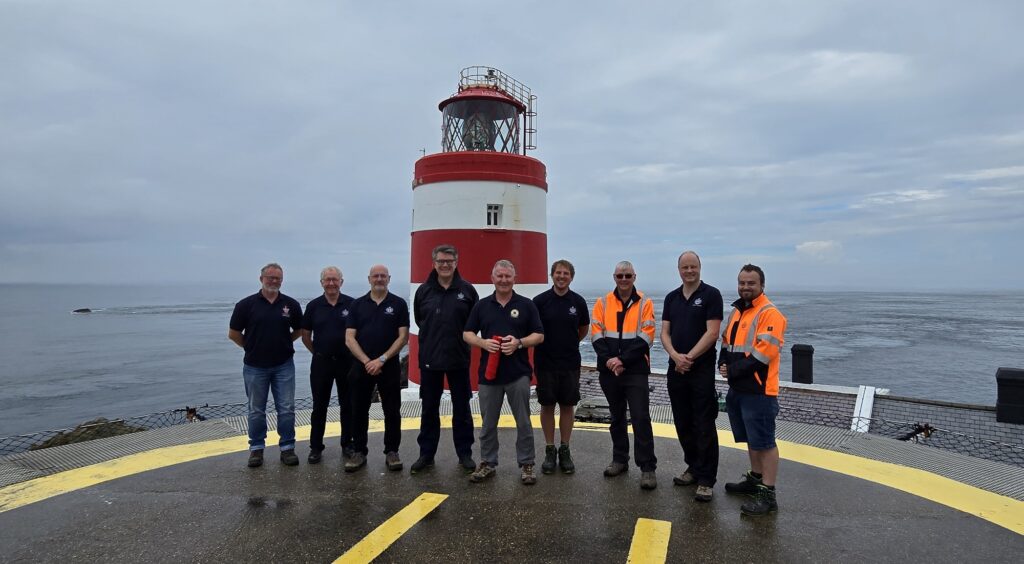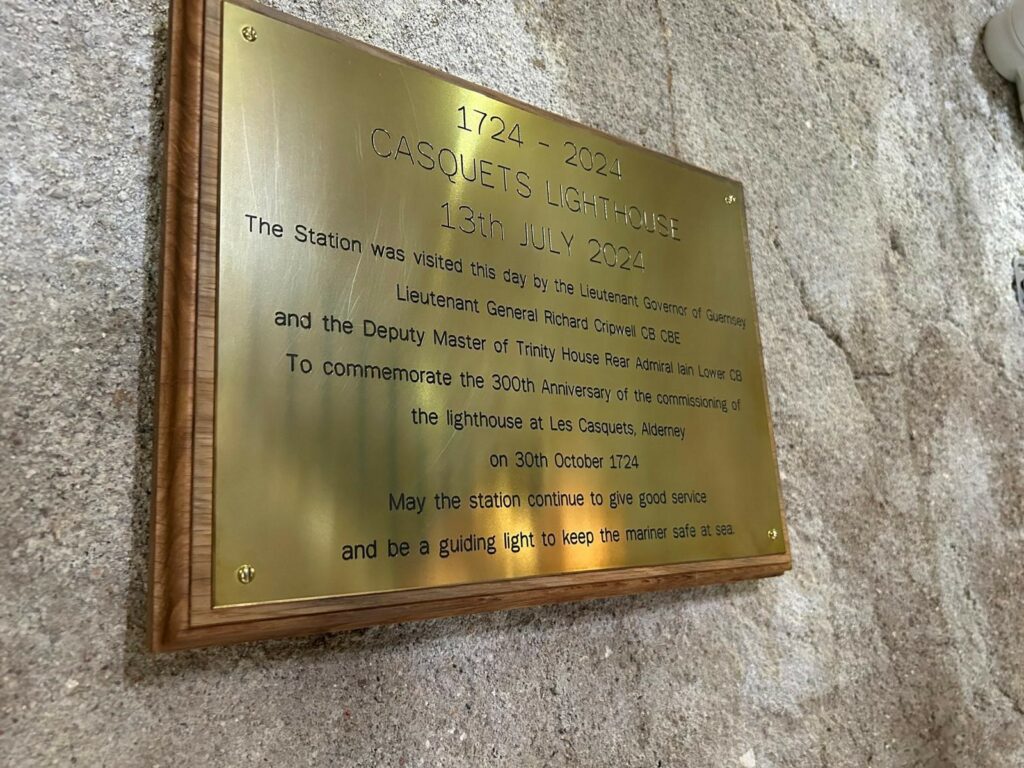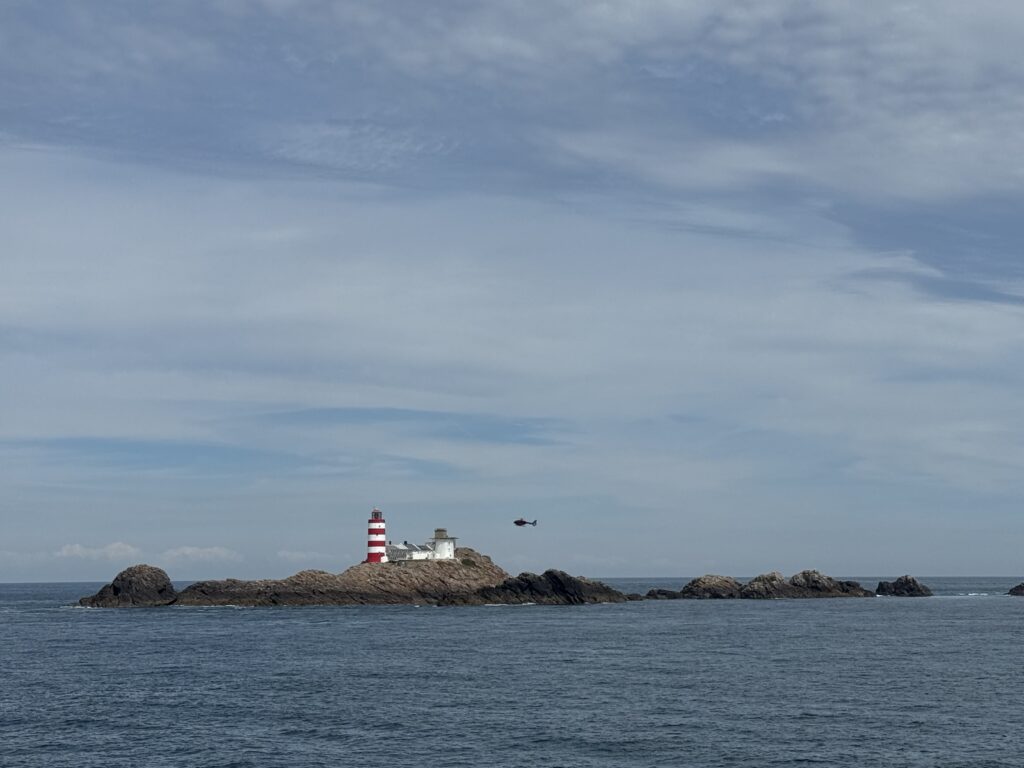300th anniversary of Casquets Lighthouse
Casquets Lighthouse was built in 1724 upon the dangerous ‘Rocks called the Casketts’ off Alderney in the English Channel after shipowners petitioned the proprietor of the rocks.
Trinity House granted Thomas Le Cocq, the proprietor of the dangerous rocks, a lease to build a lighthouse on 3 June 1723, with the requirement that a light of particular character was needed to distinguish it from those on the opposite shores of England and France.
Three separate lights in the form of a horizontal triangle were proposed, and three towers containing closed fires (coal fires burning in glazed lanterns) were erected.
These three lights—called St Peter, St Thomas and Dungeon—were first exhibited on 30 October 1724.
The three original towers at the Casquets are still in use, although only the north west tower still exhibits a navigational light.
The changing times
Over the course of three centuries, Trinity House has made sweeping changes to the technologies and working practices at Casquets Lighthouse, making the station a strong example of the balance between heritage and modernity that is key to managing a lighthouse estate across England, Wales, the Channel Islands and Gibraltar.
From the original coal fire lights, Trinity House introduced metal reflectors and Argand lamps in 1790 after assuming operation of the lighthouse in 1785; in 1818, Trinity House fitted revolving apparatus to each tower. The three towers were raised by 30ft (9.14m) in 1854.
Today, the station is run solely from renewable energy, provided by the solar system, a wind turbine and a solar thermal heating system.
Both the main and standby navigation lights are now LED; the main light still uses the historical revolving optic. The emergency lantern is a self-contained flashing unit mounted on the roof providing an 18 nautical mile range.
A rainwater catchment and treatment system processes and produces drinking water, removing the requirement to fly it to site by helicopter.
Since converting the lighthouse to automatic operation in November 1990, Trinity House monitors and controls the station around the clock from the Planning Centre in Harwich, Essex.
The anniversary
To mark the impressive tercentenary of service to mariners, Trinity House’s annual Visiting Committee of Inspection team unveiled a plaque at the lighthouse on 13 July 2024, with special guest Lieutenant General Richard Cripwell CB CBE, the Lieutenant Governor of Guernsey.
Remarking on the occasion Deputy Master of Trinity House Rear Admiral Iain Lower (he is also Treasurer of IALA) said: ‘It was a great pleasure to be able to unveil the plaque at Casquets Lighthouse along with the Lieutenant Governor.
‘A tercentenary is a fantastic milestone and it tells quite a story about the timeless utility of lighthouses; three hundred years of evolution and day-and-night service to mariners, made possible by lighthouse keepers, technicians, boat handlers, helicopter pilots and everyone at Trinity House, past and present. I extend my gratitude to all of them, and look forward to many more years of Casquets Lighthouse providing a crucial safety service.’
About Trinity House
Created by Henry VIII in 1514 Trinity House is a maritime safety and welfare organisation that works for the benefit and safety of all mariners as a General Lighthouse Authority and maritime charity.
As a General Lighthouse Authority, it operates marine aids to navigation that are critical to the safety of ships and seafarers, providing an essential service for the prosperity of our island nation.
As a self-funding maritime charity, it provides education, support and welfare to the seafaring community.



